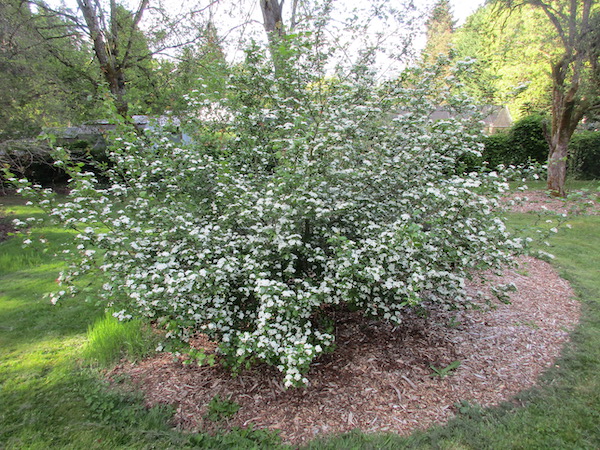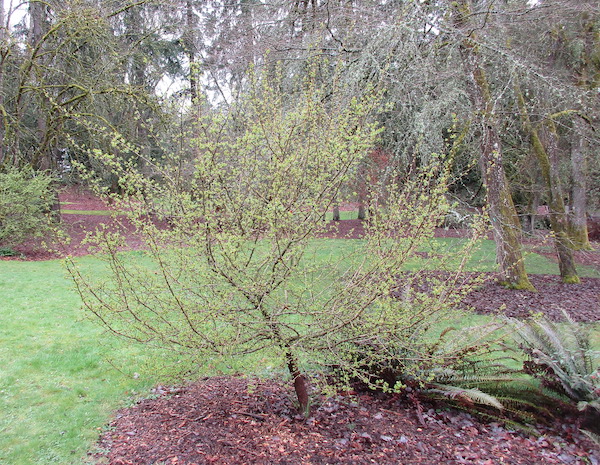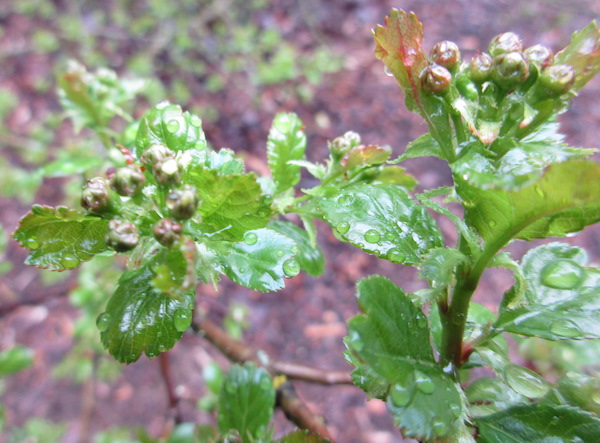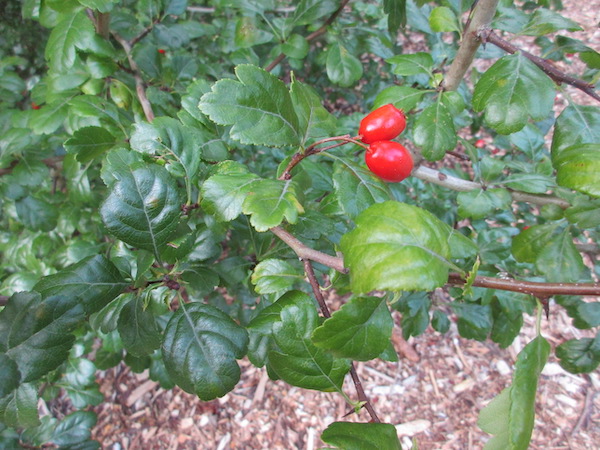Plant of the Month: March 2021
|
| An extremely rare Hawthorn in Seattle |
Cratægus lævigata (Poir.) DC.
|
= C. Oxyacantha auct., non L.
|
(ROSACEÆ); Rose Family
|
| Here is the "life story" of a Hawthorn tree that is exceedingly rare in Seattle. In January 1990, I visited Crane Island, a tiny private island south of Orcas Island's west end, in the San Juan Island group of Puget Sound / Salish Sea. My hosts, Bob & Nancy Becker, were pleased to show me a humble little tree that had been planted in the 1920s. It was the original, wild version of the English Midland Hawthorn, Cratægus lævigata. Yet this stunted little tree was significant. Why? Because virtually all North American trees called Cratægus lævigata are either its cultivars or hybrids, preferred as ornamental trees due to bearing variously double, pink or red flowers. In contrast, the Crane Island tree bore the simple white flowers God gave it originally. |
| This rare tree is native in Europe and SE England, and is also called English Woodland Hawthorn. It is outnumbered mightily by its close cousin, the larger-growing, more robust Common Hawthorn Cratægus monogyna, also called English or Oneseed Hawthorn. The two species hybridize. For many years, they had been deemed two versions of one species, called Cratægus Oxyacantha. |
| In June 2003, botanist Peter Zika and I went to Crane Island to collect herbarium specimens of the rare tree, then about 15 feet tall, as well as some of its local offspring, spread by robins, waxwings or other wildlife. I dug up a seedling, planted it in my Seattle garden, and when it had grown to about 4 feet tall, donated it to Washington Park Arboretum in February 2014. It has accession number 16-14, and grows in a moist lawn, 50 feet south of the bee garden that is south of the Graham visitor center parking lot. The tree is now is healthy, handsome, floriferous and makes bright red fruits. At this writing it stands 9 feet tall (11 feet by September 2021) , 12 feet wide, on a short trunk 3 inches thick. It is growing more rapidly than its parent on Crane Island, because the latter is in the Olympic Rain Shadow, has poorer soil, gets no summer watering, and has more competition for moisture from other trees. |
At the bottom of this page is a chart of distinctions between the two species. On a practical everyday scale, I guess the Midland Hawthorn is grown so rarely in its natural or original form, because it is slow as a seedling, then remains low, bushy, and spreading. If you desire a tree to grow upright, and be suitable for lining streets or walking under, its hybrids are immensely better suited. But if you are fond of SE England, and like the idea of growing one of its "underdog" native species, then you may care to obtain seeds to raise your own tree. Since it blooms a week or two before the Common Hawthorn, the Midland Hawthorn can set some seeds that will be purebred.
Back |

Crataegus laevigata in bloom (April 2020), photo by ALJ
|

Crataegus laevigata flushing in late March, photo by ALJ
|

Crataegus laevigata flushing close up, photo by ALJ
|

Crataegus laevigata ripe berries photo by ALJ |
|
|

